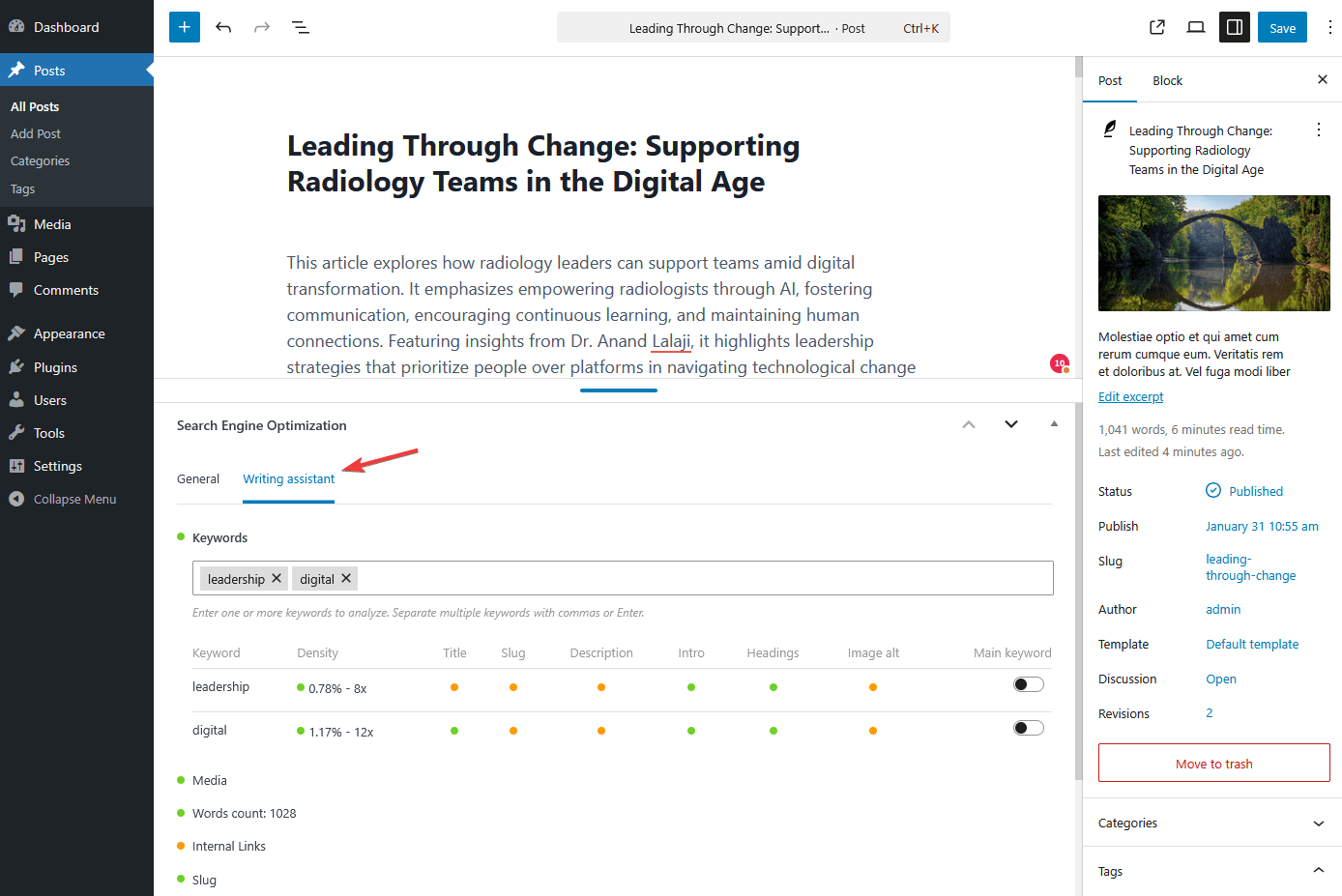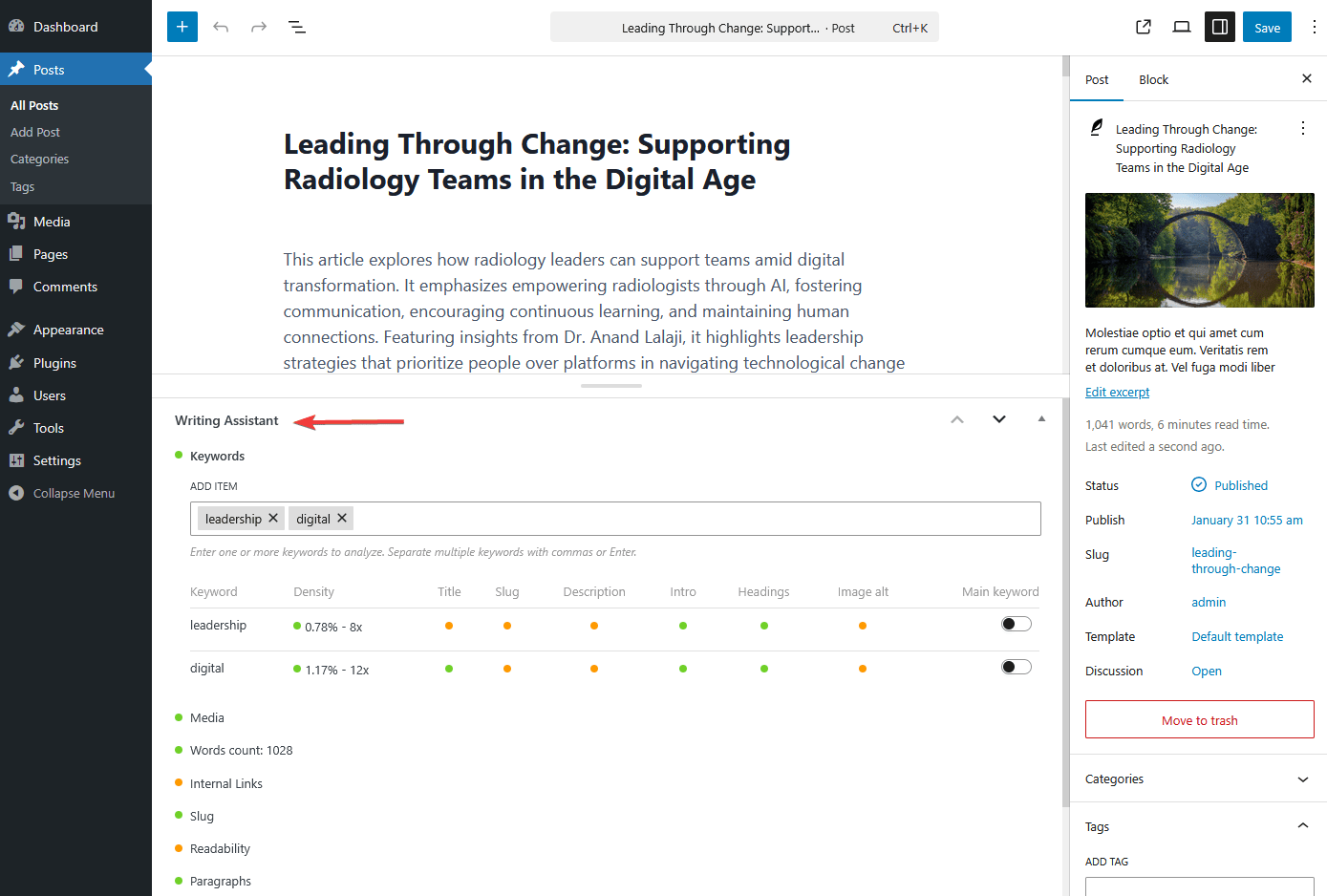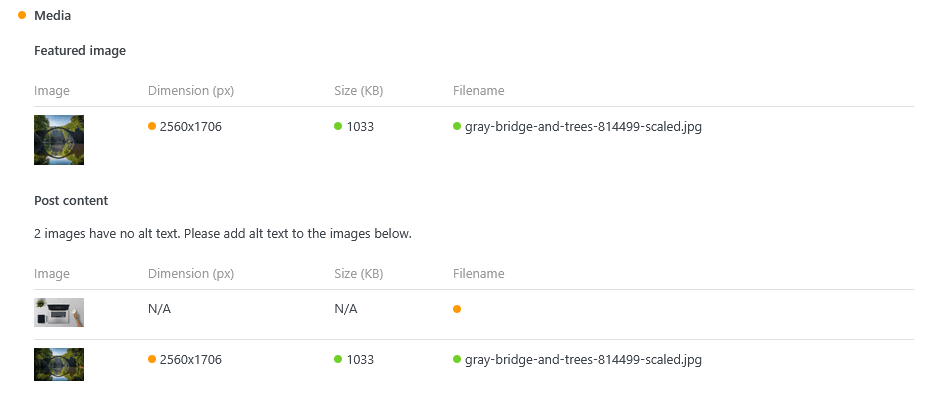Writing Assistant
The Writing Assistant feature analyzes your content in real time to help you create SEO-optimized posts and pages. It provides instant feedback on keywords, readability, content structure, and media optimization, helping you improve quality and search engine rankings.
Where to Find It
If you use Slim SEO Free, you'll see the Writing Assistant tab in the Search Engine Optimization meta box when editing a post or page:

If you don't use Slim SEO Free, you'll see the Writing Assistant meta box instead:

Just a reminder that you can use Slim SEO Pro with or without Slim SEO Free.
- Slim SEO Free includes a complete set of basic SEO features.
- Slim SEO Pro offers additional premium SEO features not included in Slim SEO Free.
For the best results and the full feature set, install and use both plugins together.
How It Works
The Writing Assistant offers suggestions to help you improve your content. These are opinionated recommendations, not strict rules you must follow. Think of it as an assistant providing feedback to enhance your writing.
Recommendations
Below is the full list of recommendations. Each has a colored indicator in its title:
- Orange: Needs improvement
- Green: No issues detected
Click a section title to expand details, including explanations and specific issues to address.
Keywords
Keywords are the first element analyzed (see the screenshot above). Slim SEO Pro lets you enter multiple keywords and evaluate them against your content.
In the Keywords section:
- Enter your target keywords, separate multiple keywords with commas or press Enter.
- Mark one keyword as your Main keyword using the toggle switch.
For each keyword, the plugin checks:
- Keyword density: Counts how often and how many times a keyword appears. A density between 0.5% and 3% is recommended. Lower values mean the keyword may not be a topic of the article, while higher values may appear spammy.
- Keyword placement: Checks if the keyword appears in the title, slug, excerpt, intro paragraph, headings, and image alt text - important locations for signaling your topic to readers and search engines.
Media

This section analyzes your featured image and any images within your content.
- Featured image: Warns if no featured image is set.
- Post images: Warns if images are missing alt text.
It also evaluates each image for:
- Dimensions: Warns if width exceeds 1920px (suitable for most screens).
- File size: Warns if the image is larger than 2MB, to ensure fast loading.
- Filename: Warns if filenames contain special characters. Use meaningful, descriptive names, and consider adding keywords. (This check is advisory and not enforced strictly.)
Word Count
Tracks total word count, including image alt text. We recommend writing at least 500 words to avoid thin content, which can hurt SEO.
Internal Links
Counts internal links to other posts or pages. Adding internal links can:
- Help readers find related and useful content
- Assist search engines in understanding your content's context
- Help search engines discover new posts
- Pass link juice to other pages
- Demonstrate expertise, boosting your authority
This is a quick overview. For detailed link analysis, use the Link Manager module, which provides:
- Internal outbound links: From this post to other posts
- Internal inbound links: From other posts to this one
- External outbound links: From this post to other websites
- Link suggestions: Related content suggestions for internal linking
Slug
The slug is an important SEO element. We check slug length and recommend keeping it under 5 words for better readability.
Note that keyword inclusion in slugs is already checked in the Keywords section.
Readability (English Only)
We assess content readability using the Flesch–Kincaid readability tests.
Score ranges:
- 90-100: Very easy to read
- 80-89: Easy to read
- 70-79: Fairly easy to read
- 60-69: Okay to read
- 50-59: Fairly difficult to read
- 30-49: Difficult to read
- 0-29: Very difficult to read
If your content scores low, try:
- Shortening sentences, especially for complex topics
- Breaking up long paragraphs
- Avoiding unnecessary jargon
Paragraphs
Checks paragraph length for optimal readability.
Recommendations:
- Minimum: 2 sentences per paragraph (avoid single-sentence paragraphs)
- Maximum: 10 sentences per paragraph (too long is harder to read)
- Maximum words: 200 words per paragraph
Now you're ready to create content that's both useful and optimized for SEO!